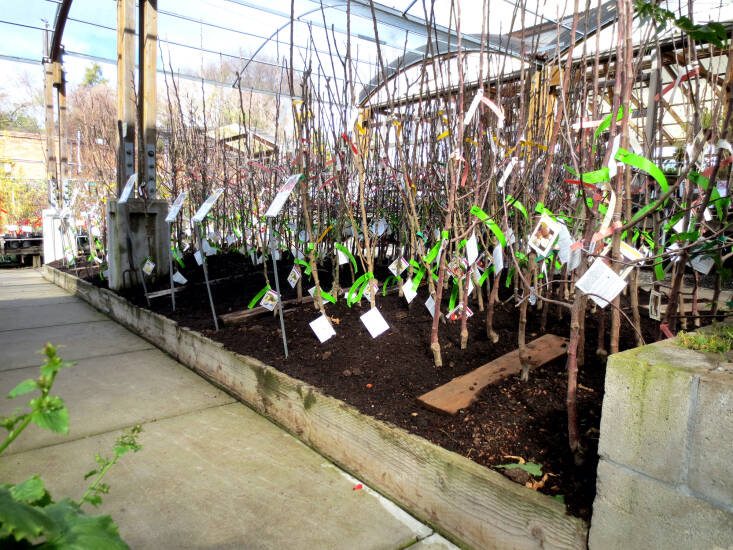Always on the hunt for amazing nurseries to visit? Me too. I find them wildly inspirational as I stroll around the aisles, observing, learning and discovering new varieties and plant combinations. In Berkeley, there is one nursery that I routinely visit (bonus: around the corner at Hopkins Street Bakery you can find the tastiest handheld fruit pockets), and it’s Berkeley Horticultural Nursery—or Berkeley Hort, for short. To gild the lily here, this fabulous nursery is celebrating its 100th Anniversary!
Please keep reading to learn more about this robust and family-run nursery:
Photography courtesy of Berkeley Horticultural Nursery.
How did Berkeley Hort get started?

In 1922, George Budgen opened Berkeley Hort’s doors. (Cool fact: His great-grandson runs it today.) George, it turns out, was a forerunner in introducing fuchsia hybrids and Malaysian Rhododendrons to California gardeners. In 1935, he actually named a fuchsia hybrid after his only daughter, Constance, which you can still buy at the nursery today. In the early ’70s, the nursery was famous on the West Coast for its unique fuchsia collection and annual fuchsia shows. The bummer part of the story: In the early ’80s, a tenacious and destructive mite invaded and fizzled the craze. George, luckily, also had a penchant for dwarf conifers and alpine plants like charming Edelweiss. The nursery became a true family business in 1954 when George’s daughter married plantsman Ken Doty, and then Ken’s son Paul got into the mix at an early age and is now involved, too.
What’s unique about it?

I know what qualities make the nursery special to me but I wanted to know what other people think so I asked Paul Doty. “A few things come to mind,” he shared. “Our diversity of plants, helpful staff with gardening experience, and a large space (1.6 acres) to display plants in a comfortable setting.” Turns out, those are my favorite qualities too.
What is the nursery known for?

Plant lovers shop Berkeley Hort for their selection of edibles, rhododendrons, succulents and cacti, and drought tolerant plants. Also, the nursery has a wonderful demonstration/test garden that first began as a showcase for George’s collection of dwarf conifers; later, in the 1960s, it exhibited unusual flower bulbs from around the world. “More recently it shows off trendy, collectable oddities and plants that we’d like to see more of in Bay Area gardens,” says Paul. He mentions that, personally, he’d like to see more people plant more appropriate, slow-growing trees. “Many novice gardeners ask for ‘fast growing trees,'” he says, “which can be a big mistake during the next big windstorm.” Paul’s suggestions: native trees, miniature trees, bird habitat trees, and slow- to moderate-growing trees. “Think planting for the next generation.”
How is the nursery adapting to climate change?

Berkeley Hort, not surprisingly, has always been involved in the native plant movement (thanks to Ken, who started the California Native Plant Society in 1965), and today 15 percent of the inventory is natives. In addition, the nursery has embraced being water-wise, especially after the severe drought of 1976 to 1977. “Seven years ago we started a section called ‘Dry Ideas’ where we showcase less-common plants to use in the drought-friendly garden,” says Paul. Some of the top plants in this section are Mangave, Beschorneria, Protea relatives like Banksia and Leucadendron. “Just about anything from Mediterranean regions are good.”
Berkeley Hort is celebrating all year with plant sales, music and art events plus free plant giveaways.
For more on nurseries we love, see:
- Ridiculously Charming, Even for the Cotswolds: The Nursery at Miserden
- Shopper’s Diary: Gowanus Nursery in Brooklyn
- Shopper’s Diary: A Love Affair with Houseplants at Pistils Nursery in Portland









Have a Question or Comment About This Post?
Join the conversation